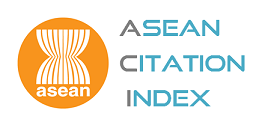The Philippine Mango Industry Governance, Prospects, and Recommendations: The Case of Guimaras Province
Keywords:
Agriculture, Guimaras, Good governance, Mango industry, Local governmentAbstract
The agricultural industry in the Philippines is an essential driver of the economy, faced with compelling issues surrounding governance in responding to the immediate needs and concerns of the sector. This study aims to examine how governance works in the mango industry of Guimaras. Both descriptive and analytical, this case study utilized qualitative research methods. Primary data from thirty key informants and secondary data from representatives of government offices that relate to the agricultural development agenda of the province were gathered. Also, secondary data from government reports and the world wide web were utilized. Qualitative data analysis QDA and thematic analysis were instrumental in the study. The findings reveal that the Province of Guimaras provides policies, programs, and projects essential to the development of the mango industry. The focus of the province is to boost the local mango economy for both domestic and international markets. This notwithstanding, there are issues that the industry is confronted with, particularly with its working sector. Using the UNESCAP’s good governance framework, the study identified the key issues and concerns of the mango industry workers. In gist, through good governance, the mango industry has not only the potential to boost the province’s economy but also is vital to the interests and economic needs of its workers. In this vein, the Guimaras mango industry should address the concerns of its workers through the provision of services and assistance to help the sector, with the end goal of boosting mango production.
Downloads
Published
How to Cite
Issue
Section
License
The opinions and ideas expressed in all submissions published in Thammasat Review are solely that of the author(s) and do not necessarily reflect that of the editors or the editorial board.
The copyright of all articles including all written content and illustrations belong to Thammasat Review. Any individuals or organisation wishing to publish, reproduce and distribute a particular manuscript must seek permission from the journal first.








